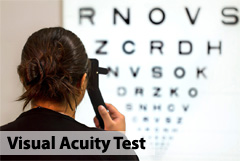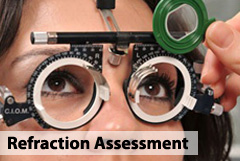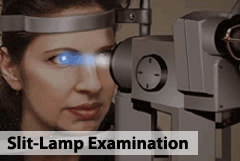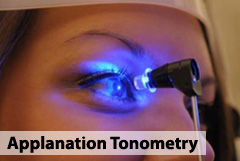Services
A complete eye exam involves a series of tests designed to evaluate your vision and check for eye diseases. Your eye doctor may use a variety of instruments, shine bright lights directly at your eyes and request that you look through an array of lenses. Each test during an eye exam evaluates a different aspect of your vision or eye health.
A common test for visual acuity, your doctor has you read from a Snellen chart to determine how well you can see letters from across the room.
Determine your prescription for glasses / contact lens, your doctor does a refraction assessment. He or she asks you to look through a trial frame glasses, to help judge which combination of lenses gives you the sharpest vision.
Your doctor may use a microscope called a slit lamp to examine the front of your eye. The microscope focuses an intense narrow line of light on your eye. The slit lamp provides a magnified, 3-D view of the eye and allows your doctor to detect any small abnormalities. Used with an ophthalmoscope and special lenses, the slit lamp also provides detailed views of the back of the eye.
Measures the amount of force needed to temporarily flatten part of your cornea. The test involves using a slit lamp equipped with forehead and chin supports and a tiny, flat-tipped cone that gently comes into contact with your cornea. This pressure measurement helps your doctor determine whether you may be at risk of developing glaucoma.
Doctor holds your lids open and shines a bright light into your eye from a head-mounted instrument through a large lens. This allows your doctor to see a detailed 3-D view of the structures at the back of your eye.
You can find a list of the most common eye diseases here.










